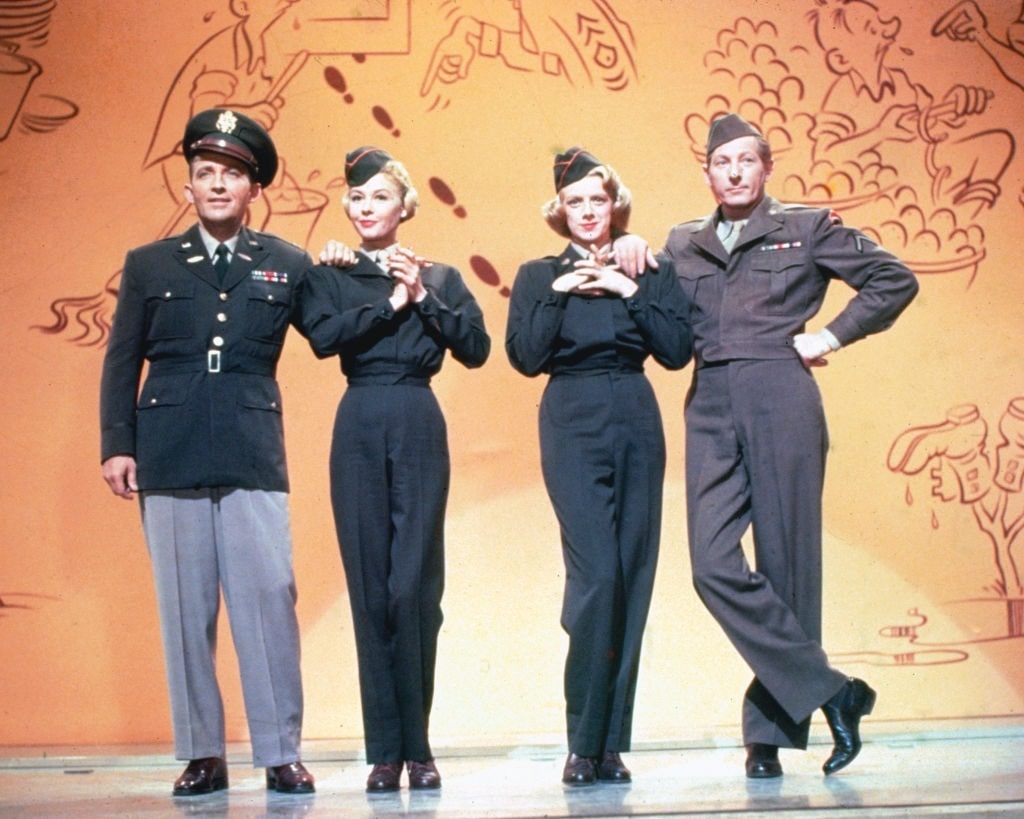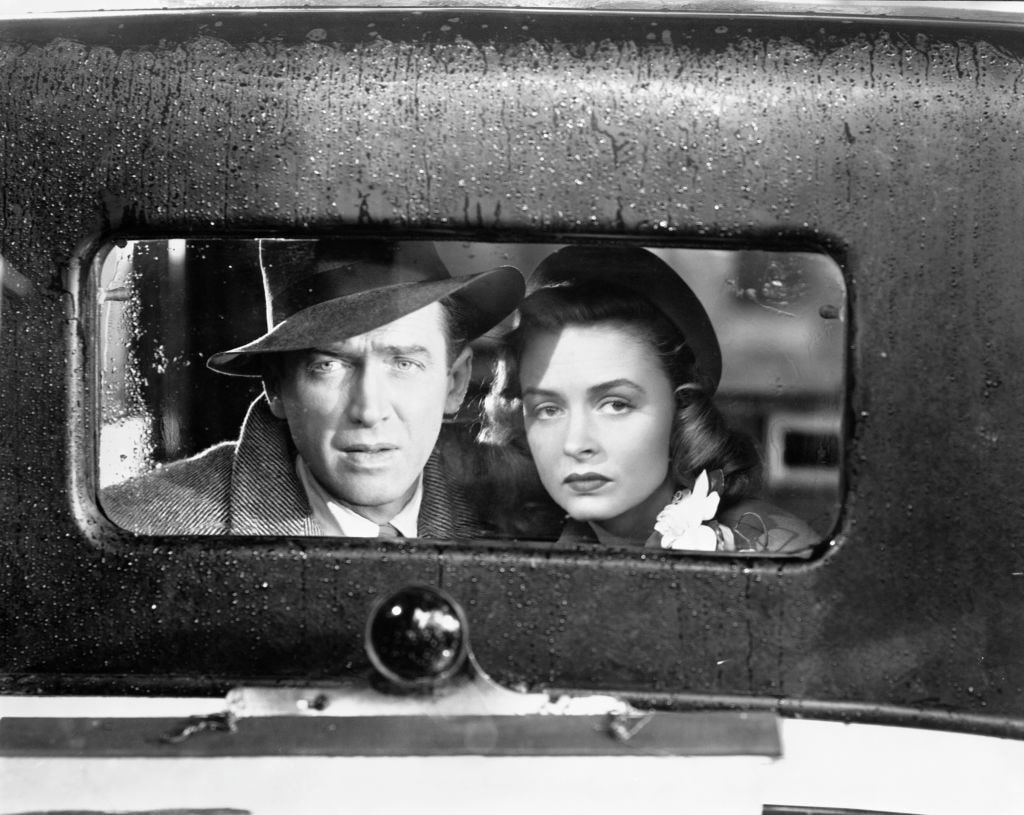Christmas Day plans are often rooted in family tradition, and it could be argued that these familiar customs are what make it so special. One family’s cheese fondue every Christmas is another family’s roast beef and gravy. Likewise, it can be tricky to deviate from these time-honored rituals.
One family tradition common to many is to watch the same movie every Christmas evening once all the gifts have been opened and dinner has been served. The flick is so familiar that family members can recite the dialogue to each other. Could it be time for something new?
So this year, you mutter to no one in particular, “It’s time for a change.” But that would mean disrupting tradition, so you tread softly at first, and when you’ve finally got a quorum for a new movie, reality sets in: “Now, what movie should we watch? The ensuing debate might sound something like this:

(Photo by Silver Screen Collection/Getty Images)
Leesa K. Donner: It’s time to go boldly before the throne and argue for the best Christmas movie ever: Paramount Pictures 1954 classic White Christmas.
Tim Donner: Surely you jest, my dear. Despite the title, most of the movie White Christmas is – wait for it – not about Christmas (we now grant permission for you to restart the raging debate about whether Die Hard is a Christmas movie or not). After the Christmas-themed opening, we don’t rejoin the Christmas narrative until near the end. Besides, White Christmas is not DEI-compliant. Why should Christmas only be for white people?!?
LKD: Stop it. White Christmas is entertaining for the whole family. With Bing Crosby, Danny Kaye, and Rosemary Clooney, it brings an all-star cast and some of the most beautiful Christmas music ever written by Irving Berlin. The singing and dancing are fantastic, and it’s a throwback to another era, which is the ultimate escapism.
TD: When I watch a movie after all the gifts have been opened and things quiet down after our yearly yuletide feast, I like to close the festivities with a film not so much about the pageantry of Christmas but the meaning. And few movies carry a more profound message than It’s a Wonderful Life (though I admit to being influenced by my love of Jimmy Stewart and the greatest movie ever, The Philadelphia Story, with him, Cary Grant, and Katharine Hepburn).
LKD: It’s a Wonderful Life is a good choice, but it feels a bit heavy for Christmas evening. Why not something that offers both a poignant message and some fun? And I argue White Christmas has both. The story begins on Christmas Eve in war-torn Europe circa 1944. The Army’s 151st Division is gathered for a makeshift Christmas celebration ending with a poignant goodbye to its tough but beloved leader – Major General Thomas Waverly, brilliantly played by Dean Jagger. The last vestiges of the war end the opening scene, and the viewer is transported to postwar America.
Army buddies Captain Bob Wallace (Bing Crosby) and his often annoying friend Private Phil Davis (Danny Kaye) hit the big time with their song-and-dance act. The banter between Crosby and Kaye is hilarious as they argue, much like an old married couple. But soon, their world is turned upside down when they attend the nightclub act of the Haynes Sisters. Romance blossoms as Bob takes a shine to Betty (Rosemary Clooney), leaving Phil and Judy to pair up – something that might begin as a ruse but could lead to true love.

James Stewart and Donna Reed (Photo by Screen Archives/Getty Images)
But before all that happens, the two couples head to Vermont for a gig only to find no snow at the Ski Resort where they’re scheduled to appear. As it turns out, the ski resort is owned by none other than their former fearless leader, Major General Waverly, who has been feeling a bit lost and useless since the war’s end, not to mention being deeply in debt trying to run the resort amid record-breaking warm weather. It all adds up to a touching yet fun ride into yesteryear.
TD: It’s a Wonderful Life is all about George Bailey, who had generously given his time, talent, and treasure to his family and community, the mythical Bedford Falls. He had never traveled, fearing his evil nemesis, Mr. Potter, would then take over the town. On Christmas Eve, George’s Uncle Billy loses $8,000 belonging to George’s small building and loan company on the way to the bank. The money is found by Potter, but he hides it. When the bank discovers the shortage later that night, George suddenly realizes his company will collapse — and he will be held responsible and sent to jail. Believing his loved ones – including his wife, Mary, and their four children — would be better off with him dead, George contemplates suicide. But the prayers of those he loves calls down to earth his guardian angel, who walks George through a journey of what things would have been like if he had never been born. The movie ends with a flood of positive vibes about the meaning of Christmas to our society and, more importantly, to those we love.
LKD: Wow, talk about heavy! What makes White Christmas so unique is the fantastic music and fabulous dancing duo of Danny Kaye and Vera-Ellen. With stunning costumes and spectacular choreography, they really put on a show. In the end, the general feels appreciated, and the two couples get together, and viewers are left with that warm fuzzy feeling most movies don’t permit them to have these days. Now I ask you: What could be better than going to sleep Christmas night with the melody of White Christmas ringing in your ears?
TD: Okay, then. Perhaps the answer is a Christmas Day double feature. The pageantry of White Christmas followed by the profundity of It’s a Wonderful Life, as evening turns to night, will fill the hearts of all who watch for the first time or relive the joys of these masterful films – the perfect capper to a joyous Christmas.

